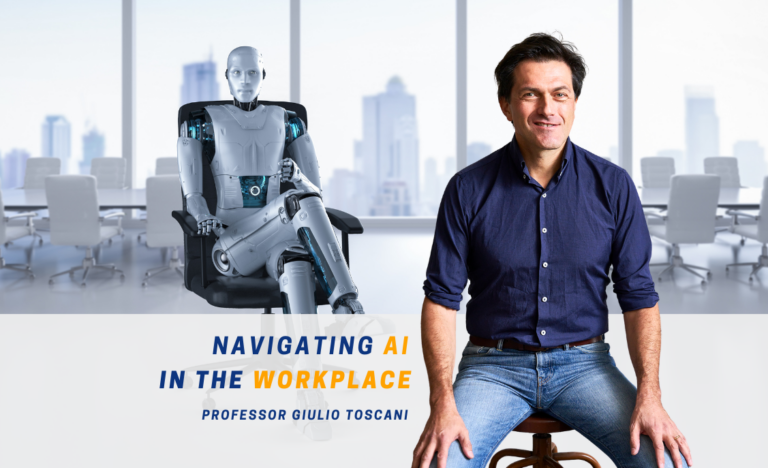Looking to build an effective brand in 2024? Ditch the stereotypical sales pitch for an empathetic brand experience that truly resonates. Branding expert Andreas Moellmann shares his insights on creating an authentic, enduring identity in today’s competitive landscape.
Forget logos and catchy slogans. According to branding expert Andreas Moellmann, the key to building a successful brand in today’s age lies in authenticity, consistency, and courage. In the experience economy, companies succeed by forging genuine connections through transformative experiences – not bigger ad campaigns.
With three decades of experience guiding brands across the world, Andreas has witnessed the power of authentic branding. We sat down with him to uncover the secrets behind building an authentic, powerful brand in today’s competitive landscape.
What is a brand and who is its customer?
A brand is more than just a logo or a name, Andreas explains. “It’s a proxy, an avatar that represents the product, service, or company towards the user. It’s the facilitator of the relationship between what a company offers and the people who use it.”
But a relationship is a two-way street. To get started on it, one must understand the other party in this exchange – the consumer or customer. However, Andreas prefers to use “people” instead.
“If I use ‘customer’ and ‘consumer,’ I only look at and seem interested in a thin slice of who that person is,” Andreas explains. “Instead, I can learn how people engage with my products and that can provide interesting learnings and insights that I can use for the brand to facilitate that relationship between product and the person.
This customer-centric view requires empathy and a genuine curiosity about understanding humans at a deeper level – what motivates them, how they think and feel, and what influences their perceptions and behaviors as consumers.
“You certainly should bring empathy for the person and their interests,” Andreas advises. “If I have an interest in the person and am trying to understand their likes and dislikes, why they’d use my product or not, I can be a better facilitator.”
This can mean shifting your perspective towards being a mediator between the company and its products. “You’re not on the company’s side, nor are you on the people or user side. You are the middle in-between,” he says.
Automotive brands provide a fitting case study. While Andreas is less interested in cars, he seeks to understand why other people have such an impassioned, emotional connection to vehicles – and how that connection evolves across generations. “If I manage to understand that meaning, I am in a better position to facilitate that relationship between the user or person and my product.”
The branding challenge for smaller companies with limited resources
For companies rich in resources, budget is rarely the barrier to potent branding. More often, it is complex internal processes, poor internal communication, and overreliance on money to solve creativity problems that stymies brand-building efforts. This presents an opportunity for nimbler start-ups and small companies willing to unapologetically lean into what makes them unique.
While large brands may be tempted to chase trends or play it safe, smaller brands can capitalize on their innate agility to create authentic, courageous messaging, Andreas notes. By staying true to their core identity and voice, upstart brands can organically cultivate devoted customer relationships that bigger competitors struggle to artificially manufacture through sheer media spend.

“For me, the most important part of building an effective brand for smaller companies is finding an authentic identity,” Andreas says. “Find your own voice and don’t create something that you wish for. Just discover the core of who you are and then simply live up to it.”
He points to examples like Oatly and Liquid Death that have captured cultural momentum through edgy, distinctive personalities that exude authenticity. This flies in the face of traditional, excessive ad budgets and forces a more innovative approach. “If you’re smaller, it often means you are required to be more innovative. You are required to find new ways of addressing issues,” Andreas notes.
For any company, achieving consistency is critical: “When you find your character, you have to stay in character. Don’t give up what you have because you fear or worry that you have to do sales promotions.”
Branding is tangible – measure it with the right metrics
Brandinging efforts are often seen as hard to measure. However, Andreas believes that it is easier than ever before. “It’s never been easier to explore the impact of your marketing or branding activities than today,” he says.
But it is not without its challenges. One of them lies in building branding competencies and incentives that encourage collaboration across siloed departments and teams.
“It is important to define all these different engagements so all work together,” he advises. “It’s not about the one engagement, it is the continuing engagement along the customer journey that leads to sales, which in turn leads to value for the company – and also should be leading to value for the customer.”
This requires a data-driven “measurement ecosystem” aligned to the customer journey, one that can synthesize disparate metrics into an integrated approach. That hinges on the CMO role: “Whose role is it? In my point of view, it should be the role of the CMO – absolutely.”
But CMOs often get bogged down in stakeholder management, so Andreas advocates for a focused data team charged with bridging organizational silos through shared measurement incentives. “Put a system together that actually makes them interact and incentivize department heads to work together,” he says. “The more they work together, the better the overall system will work.”
Branding at the C-Suite
Branding’s more qualitative, emotional core competencies can be tough for C-suites to wholeheartedly embrace, especially in hard metrics-driven cultures. Andreas believes the antidote lies in quantifying brand efforts through a chain of metrics that ties back to commercial outcomes.
“The most important thing for the C-level to clearly understand is return on investment and what is to be gained by initiatives. This way they will see that it is not about spending money, but investing it and getting back more in return.”
A strategic brand roadmap with interim value milestones can build executive buy-in: “I might not get back to the level I expected right now. But I’m seeing that what I’m doing here is creating something that is valuable to the company. So, I keep on doing it.”

Ultimately, robust branding has the potential to command premiums that transcend product value – but only if leadership grasps branding’s human-centric role. This can mean decisions that don’t just affect brand communications but the product experience as a whole.
“Branding is not something that you create around a product, but from the core of the product,” Andreas reiterates. “It’s that experience that allows the company to charge more. And when that experience becomes transformative, the brand creates the highest value for a person.
Today, we live in a ‘transformation economy’ (Joseph Pine, 2013), where brands deliver experiences that create lasting change in people’s lives. These experiences prevent the commoditization of products and allow a hefty premium to be charged (delivering the bulk of profits). That is the very concrete value of a brand to the business.
Executive Highlights
- Authenticity, consistency and courage are essential to forging an empathetic brand relationship with consumers as whole persons.
- Rather than viewing consumers as mere transactions, branding facilitates an experience that people buy into beyond the product itself.
- Challengers and start-ups can gain advantage through distinctive, authentic brand voices that sidestep excessive ad spending.
- Companies should establish measurement ecosystems and centralized brand leadership to align siloed marketing efforts.
- C-suite support and a strategy that demonstrates a tangible return on investment are essential for giving branding the strategic priority it deserves.
About Andreas Moellmann
Andreas helps brands and businesses get future-ready. A seasoned brand and marketing strategist with over 30 years experience in transformative roles from strategic planner to Chief Experience Officer at network agencies (Publicis, BBDO, DDB, Saatchi & Saatchi) and digital agencies (SapientNitro, Isobar) in Berlin, London, Amsterdam, Hong Kong, Shanghai and Tokyo.
Andreas’ focus lies in connecting brand and marketing thinking with digital understanding to help brands and businesses succeed. His work has been recognized at global, European, and local effectiveness awards, as well as Cannes. He also has served as a judge in a variety of Effectiveness competitions across the globe.
Today, Andreas provides his experience as an independent brand and marketing consultant across APAC.








